TrustCloud
Authentication
All the security layers to verify access and digital identity activity at any moment
The authentication solutions of TrustCloud allow a real-time and trustworthy corroboration of users’ identity, access and consents, enhancing data security, curbing identity theft, reducing fraud and addressing specific threats and regulatory requirements.
Digitalization makes enterprise digital assets to be accessible through multiple systems anywhere, anytime, from any device, over the Internet. This situation expands the surface area for ciber-attackers to target.
An authentication technology orchestrator is needed to check and validate the identity of every user who demands interaction or access to those digital assets through different solutions.
TrustCloud Authentication brings new corroboration capabilities and easily integrates them to the existing technologies, becoming an intelligent extra layer. It can also coordinate and adapt all the authentication elements, methods and processes to generate a reinforced corroboration of each customer, access demand or interaction, while providing the user with a frictionless experience.
FAQS
What is authentication? What is it for?
Authentication is the act or process of confirming that a user is who he or she claims to be for certain personal, valuable or risky actions, such as consenting to a transaction, demanding changes to passwords and PIN codes, or requesting access to a personal bank account.
Authentication is a security measure that helps ensure that a user’s digital activity comes from the person who has actual ownership of that user, and not from someone else who has gained control of the user illegitimately or by chance. In this way, it is also guaranteed that such digital activity is intentional and consented to by the user’s beneficial owner.
For all the above reasons, authentication requires a previously registered digital identity whose data serve as a reference to identify the legitimate user in future requests, accesses and consents. During the creation of this digital identity, the key data that will serve as authentication codes are established, which are based on four aspects: something that the user is (fingerprint), something that the user has (digital certificate), something that the user knows (password) or something that the user does (patterns and behavior profile on the web, such as typing).
What are the types of authentication?
- Single-Factor/Primary Authentication
- Two-Factor Authentication (2FA)
- Single Sign-On (SSO)
- Multi-Factor Authentication (MFA)
- Password Authentication Protocol (PAP)
- Challenge Handshake Authentication Protocol (CHAP)
- Extensible Authentication Protocol (EAP)
How does biometric authentication work?
Biometric authentication converts the physical and/or behavioral patterns, inherent to the authentic user, into unique biometric data that function as validation codes. If another user provides the system with his/her physical or behavioral traits, and they do not match the data pre-established by the authentic user, the authentication will not be validated and the activity or access will be blocked. If, on the other hand, they do match, the system understands that the user requesting access or activity is equivalent to the authentic user, validating the authentication and unblocking the process.






















